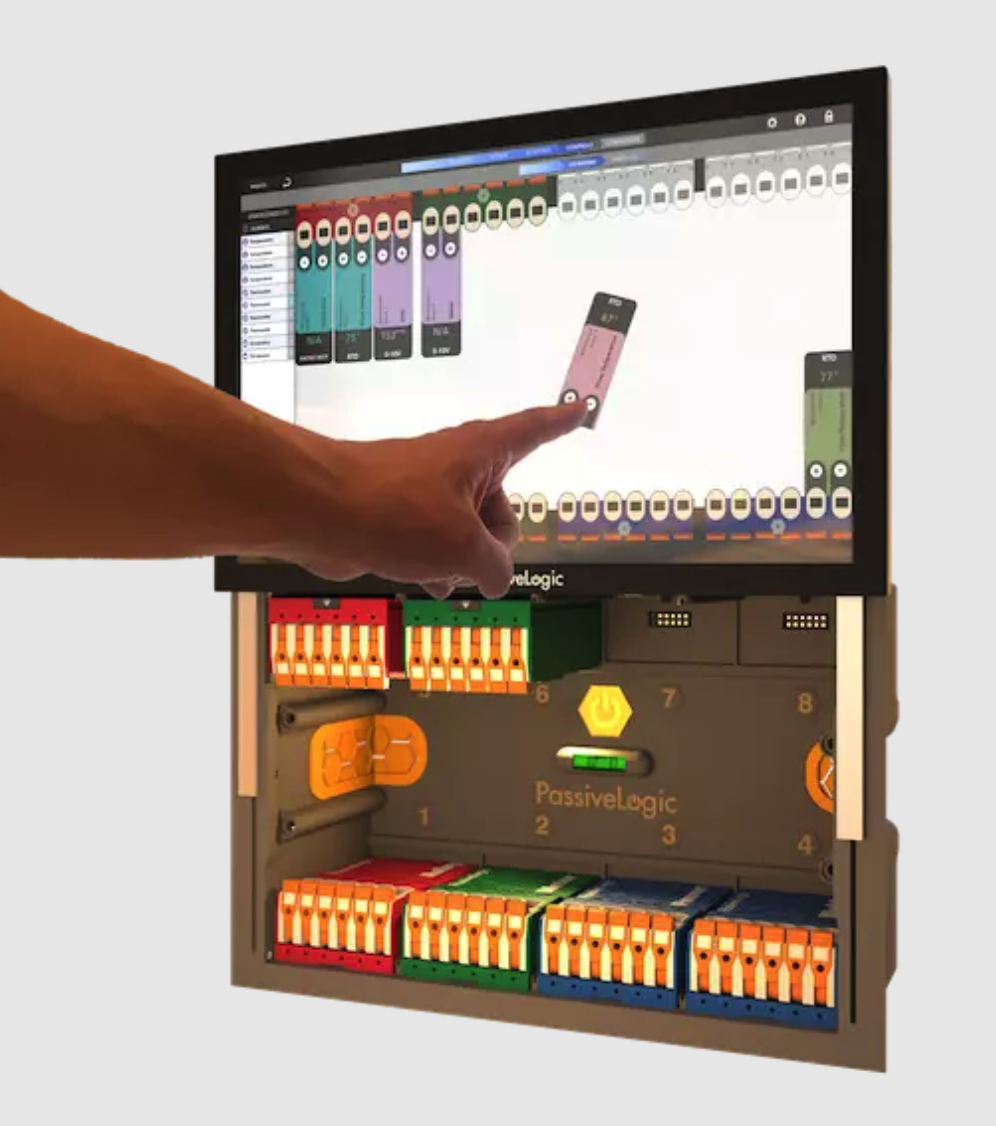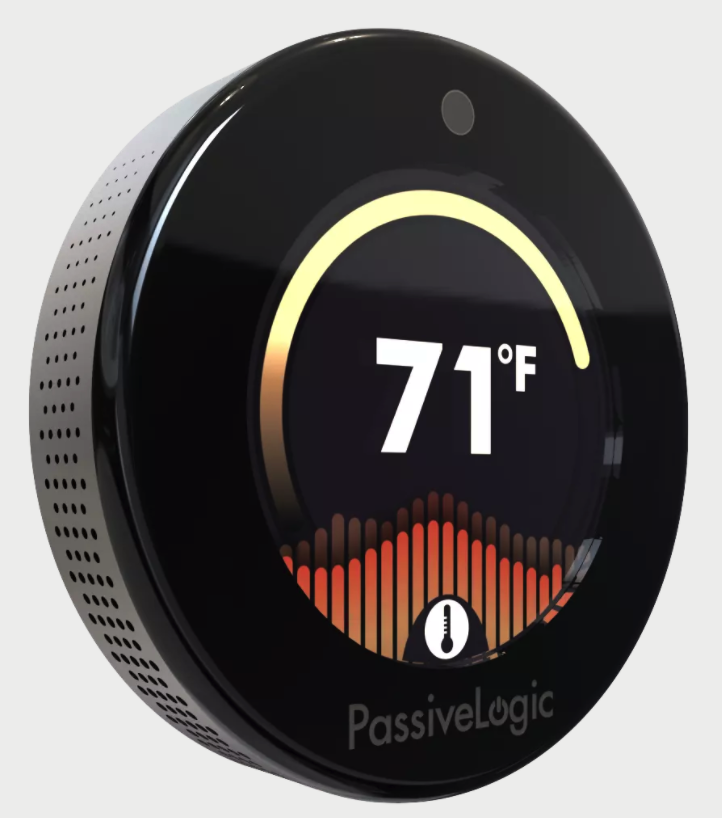Some problems are so big, so intractable, so multilayered that they're often seen as impossible tasks.
Better to try to instead to boil the ocean versus trying to untie a Gordian Knot.
And yet, over time, what was once deemed impossible can become possible.
For example, creating a flying machine capable of carrying people and goods was once such a seemingly impossible task, at least until the Wright brothers showed it was possible.

So was the concept of being able to create a machine capable of instantaneous, two-way audiovisual communication between two or more individuals anywhere in the world.
And yet, here in the year 2022, people participate in Facetime chats and Zoom meetings from their smartphones millions of times every single day without even thinking about it.
It's all part of what makes living in this tech-enabled modern era so fascinating, and head-spinning, all at the same time.
PassiveLogic Says It's Not Tackling a Sisyphean Task. And it's Now Landed a $34 Million B Round of Funding to Prove It's Right.
That said, when it comes to managing and maintaining buildings – whether we're talking apartment complexes, high-rise office buildings, and/or industrial/commercial facilities – doing so is an absolute, manual nightmare.
The boiler has gone out. The elevator's stuck between floors. Kathy's complaining that her office is too cold. There's no hot water in the men's room on the 8th floor.
And on and on and on and on.
Sure, some technology has been created and applied to help create automation via so-called Building Management Systems (BMS) and smart controls designed to address one or more function within a building, like heating/cooling, elevators, security, electricity, or more.
But most are not simple or quick to install, or manage or maintain, whether in a brand new building, let alone in a building built pre-1950.
And virtually none of these tools provides a comprehensive, all-inclusive approach.
But now comes along Salt Lake City-based PassiveLogic, who since 2016 has been working on this Gordian Knot-like problem.
And even though they have yet to officially launch their first product(s), PassiveLogic believes it's got the problem solved.

In fact, PassiveLogic feels it has 34 million reasons why it believes it's on the right track.
Specifically, PassiveLogic just announced it has closed a $34 million Series B round of funding, a round led by Addition and Keyframe, with participation from RET Ventures, Brookfield Growth, Era Ventures, and A/O PropTech.
This is on top of the $16 million Series A round the firm raised in June 2020.
The PassiveLogic Approach to Delivering Building Smarts and Autonomy
For the PassiveLogic team, they realized that they had to approach the challenge of BMS (Building Management Systems) on seven different fronts at the same time, specifically
- PassiveLogic needed a smart software platform that could quickly and simply create a real-time digital version of a building and all its components;
- Making such a smart software platform would require PassiveLogic to create its own computer language (which it did and it called it Quantum);
- PassiveLogic needed a rapidly expandable and deployable metadata-informed database, one that could reside on-site within a building, but also
- Reside in the cloud as a resource to all distributed versions of said metadata database;
- PassiveLogic needed an on-site, modularizable, networkable and easily configurable compute device;
- PassiveLogic needed flexible, smart components to modularize and configure the compute device noted in No. 4 above; and
- PassiveLogic also needed consumer-facing wireless and wired data collection devices.
So although I'm not a BMS-expert by any stretch of the imagination, I do understand a bit about technology and automation.
And doggone it, I think PassiveLogic may have figured out how to untie this Gordian Knot.
Autonomy Studio, Hive Controller, Swarm Sensors, and Cell Modules.
On the one hand, PassiveLogic has developed Autonomy Studio, which allows users to
- Create a digital model of a building, its infrastructure and its various components simply by drawing and "dragging & dropping," and in the process
- Autonomy Studio creates a digital twin of the building in question, a model tied to the laws of physics.
Autonomy Studio then connects to one or more Hive Controllers within a building.
{NOTE: A Hive Controller can operate in standalone mode or be networked with other Hive Controllers within a building.}
Hive Controllers are powered by a 12-core processor (aka, the compute function), built with a touchscreen monitor on the front of the Hive Controller, that can be slid upward to reveal the insides of the Hive box where Cell Modules can be clipped into place.

These Cell Modules are software configurable, clip-into-place, Input/Output components that allow Hive Controllers and Autonomy Studio to instantly monitor and manage I/O ranging from
- Power to Relays, and from
- Motors to other variables.
Then last but not least, PassiveLogic also developed an initial family of environmental data capturing sensors (aka, the Swarm Sensor and Swarm Nano).
Without getting too geeky, these Swarm sensors implement mesh trilateralization via Bluetooth at up to 200 meters (which I believe means Bluetooth connectivity on X-, Y- and Z-axes).

Swarm sensors can be installed and operational within one minute each, and then fitted with a touch screen display, and seven internal sensor components to provide instantaneous monitoring and tracking of
- Air Temperature,
- Radiant Temperature,
- Atmospheric Pressure,
- Sound Pressure,
- Occupancy,
- Indoor Air Quality,
- CO2 concentration, and
- Light Intensity.
And Swarm sensors are controllable on-screen, from a smartphone app, or via an Internet-connected browser.
Phew!
Put it all together, and whether you're talking about a retrofit of an existing building or starting from scratch with a brand new structure, PassiveLogic has created what it believes is the sword that will slice into pieces the Gordian Knot of managing buildings.
Who Cares (aka, What Does this All Mean)?
PassiveLogic's system allows whole-building control without requiring cloud connectivity.
As a result, recent PassiveLogic pilot projects have demonstrated 30 percent energy savings and 90 percent labor savings in programming, installation, and commissioning compared to conventional solutions.
It's why Todd Arfman of investor Addition said PassiveLogic can "... (better) help streamline the implementation and management of building controls systems."
He continued by saying:
"We're thrilled to double down and continue our investment in PassiveLogic to modernize today's building infrastructure and connectivity."
So ... have they done it?
I'm not sure, as clearly the proof will be in the pudding.
But as I visited with Joseph Riddle yesterday, the company's head of Marketing Communication, PassiveLogic is currently testing its systems in residences in Utah.
And it's working closely with some very large property owners and managers as it prepares to come to market with its complete offerings.
Bottom line, although it's still early, PassiveLogic is probably not a company I would bet against.






